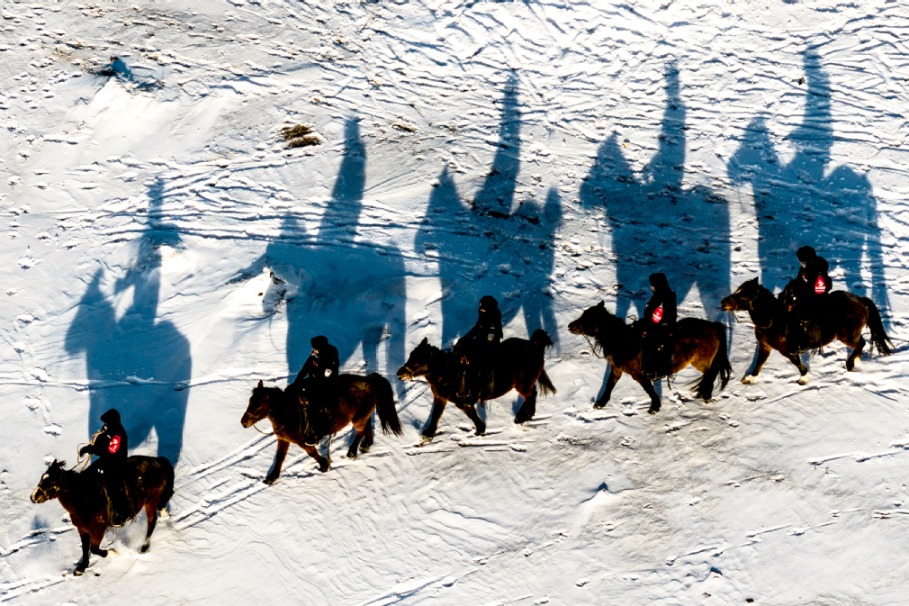New facilities will defend ecosystems


What was the thinking behind the national parks pilot program?
China's first nature reserve was founded in Guangdong province in 1956. Since then, we have built a large number of nature reserves, natural scenic spots, wetland parks and forest parks.
However, those facilities have traditionally been administered by different government departments. For example, in one park all the natural resources-the water, mountains and grassland-used to be managed by several departments.
The conflict of management rights and other interests required reform, and that process is designed to produce a new mechanism to protect the country's natural resources.
In 2013, the central government officially proposed construction of a national parks mechanism as a means of protecting the country's typical ecosystems. The pilot plan was released in 2015.
What's the connection between construction of national parks and the State Council's guidelines to build a mechanism of natural reserves?
In July last year, the State Council unveiled a guideline to improve the protection of nature reserves with the aim of achieving world-leading management and conservation levels by 2035.
Under the guideline, a protection mechanism, featuring national parks as a major component, will be established by 2025.
The parks are expected to provide systemic protection for natural ecosystems, relics, scenery and biodiversity, and also safeguard the country's environmental security.
Under the guideline, there will be three kinds of protected areas-national parks, nature reserves and nature parks-based on their environmental value.
The program will end in the next few months. How is the final evaluation going?
The final evaluation, which started this month, is being conducted by an independent organization and will take about 20 days to complete. We will write a report next month and hand it to the State Council. The final list of parks will be announced by the State Council.
Are the 10 parks all under the administration of the central government?
No. Let me clarify the two "rights" of the pilot national parks-property rights and administrative rights. The central government holds the property rights for parks that cover land across several provinces.
In all other cases, the property rights belong to the government of the province in which the park is located. In the future, the property rights of all national parks will be owned by the central government.
There are three kinds of administrative rights. The central government owns the administrative rights for the Giant Panda National Park, the Qilian Mountain National Park, the Three-River-Source National Park and the Hainan Tropical Rainforest National Park.
The first two parks I mentioned are managed directly by the central government, while the next two are administered by provincial authorities on behalf of the central government.
The six remaining pilot parks are directly managed by the relevant provincial governments.
What is the major intellectual support for the construction of national parks?
So far, the National Forestry and Grassland Administration has launched at least three research institutes to provide long-term support for the construction of national parks, with the help of experts from several well-known organizations, including the Chinese Academy of Sciences.
For example, in 2018, a research center for national park planning was established in the southwestern province of Yunnan in an effort to facilitate the protection of nature reserves.
With more than 70 researchers specializing in zoology, botany, landscaping, and wetland and nature reserve protection, the center is building on work conducted by an institute (The Kunming Institute of Survey and Design) that has been dedicated to national park research since the 1990s.
Also, many colleges-including Tsinghua University, Beijing Normal University and Beijing Forestry University-have either established majors in national park studies or national park research centers, which will provide intellectual support for the construction of national parks.
Will more national parks be planned when the pilot ends?
As I stated, the parks will protect natural ecosystems, relics, scenery and biodiversity.
We will produce a comprehensive plan to identify different regions with representative ecosystems or geographical features around the country and ensure that each unit comes under the protection of at least one national park.
So far, we've identified 40 units and are expecting to build about 40 to 80 national parks in the future.
- Macron's China visit strengthens ties, boosts cooperation on global issues
- CPC issues revised regulations on its working bodies
- Melodic harmony under gingko tree
- Media tour explores Xiamen's tech surge and smart manufacturing
- Discover Xiamen with beauty of ecological governance
- Conference aimed at strengthening global organ donations opens in Guangzhou




































